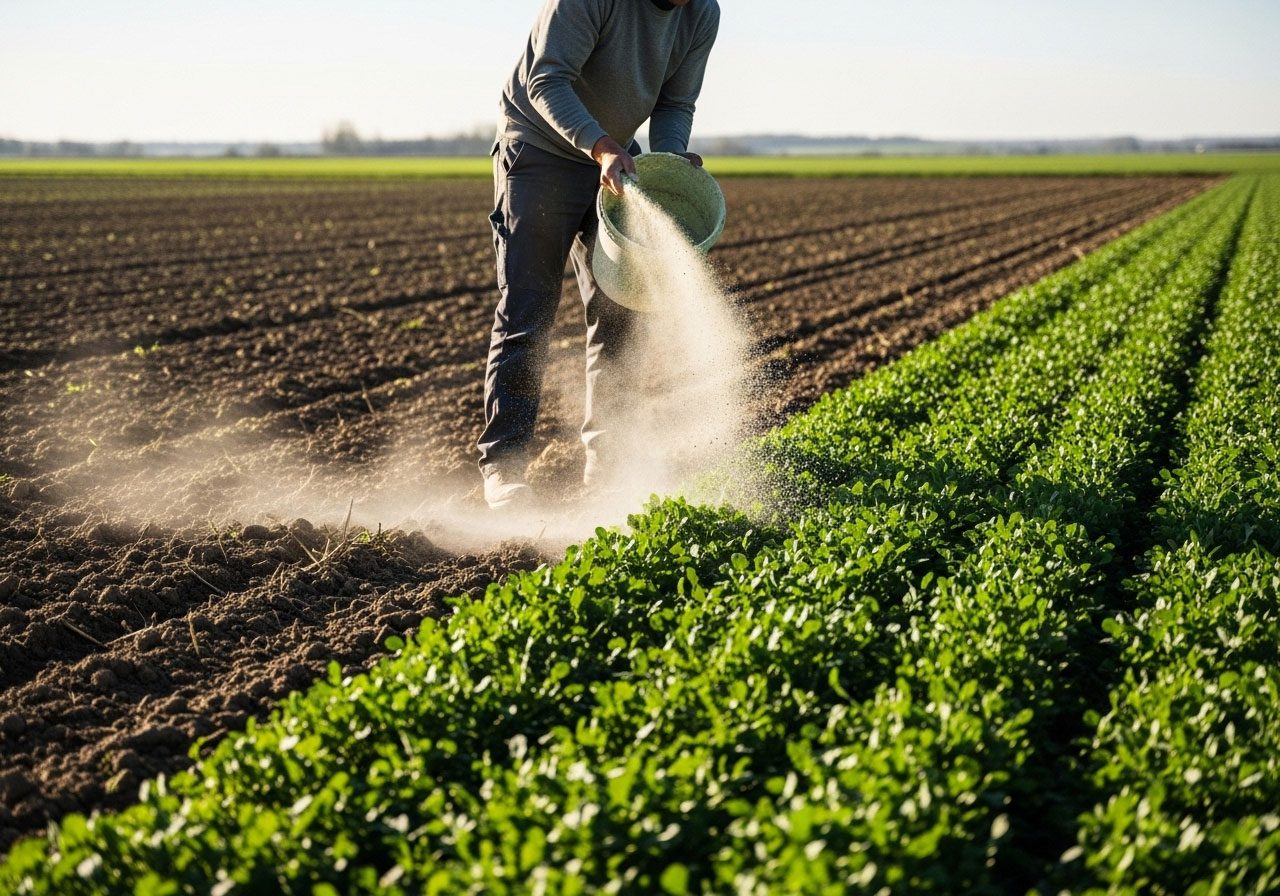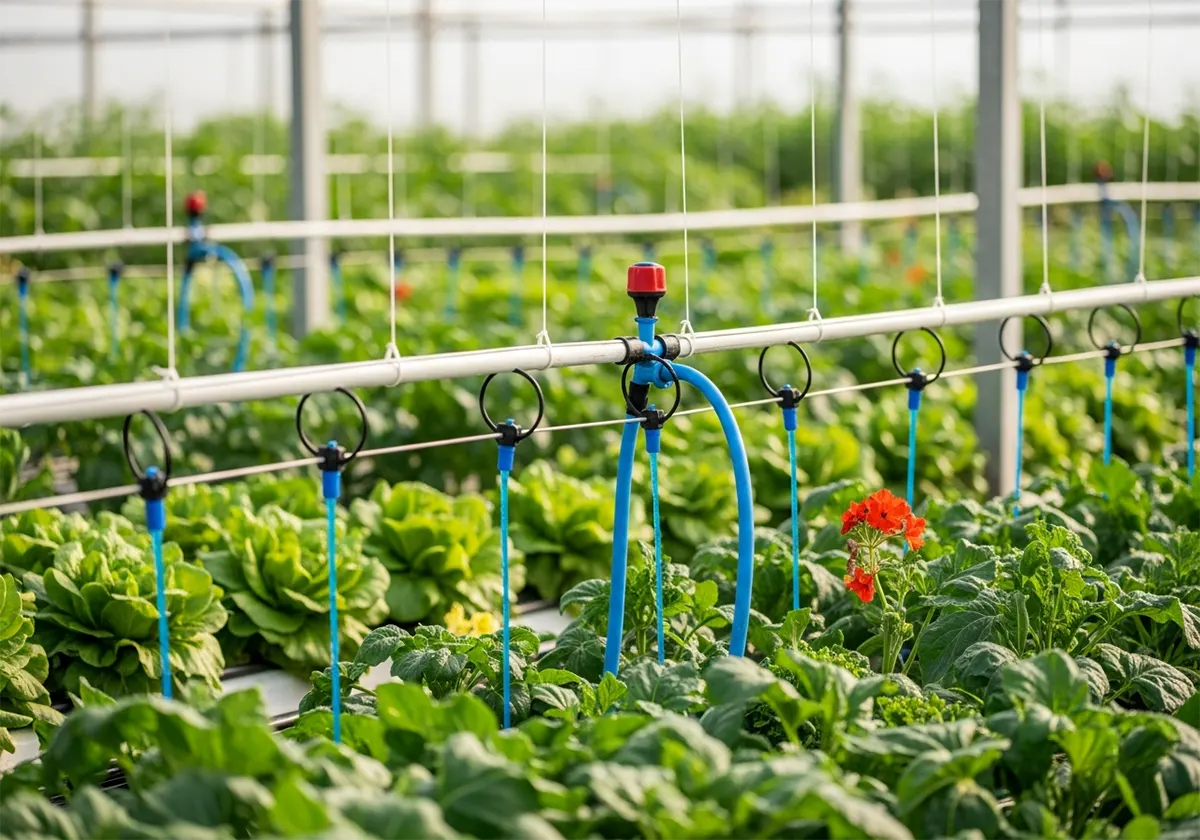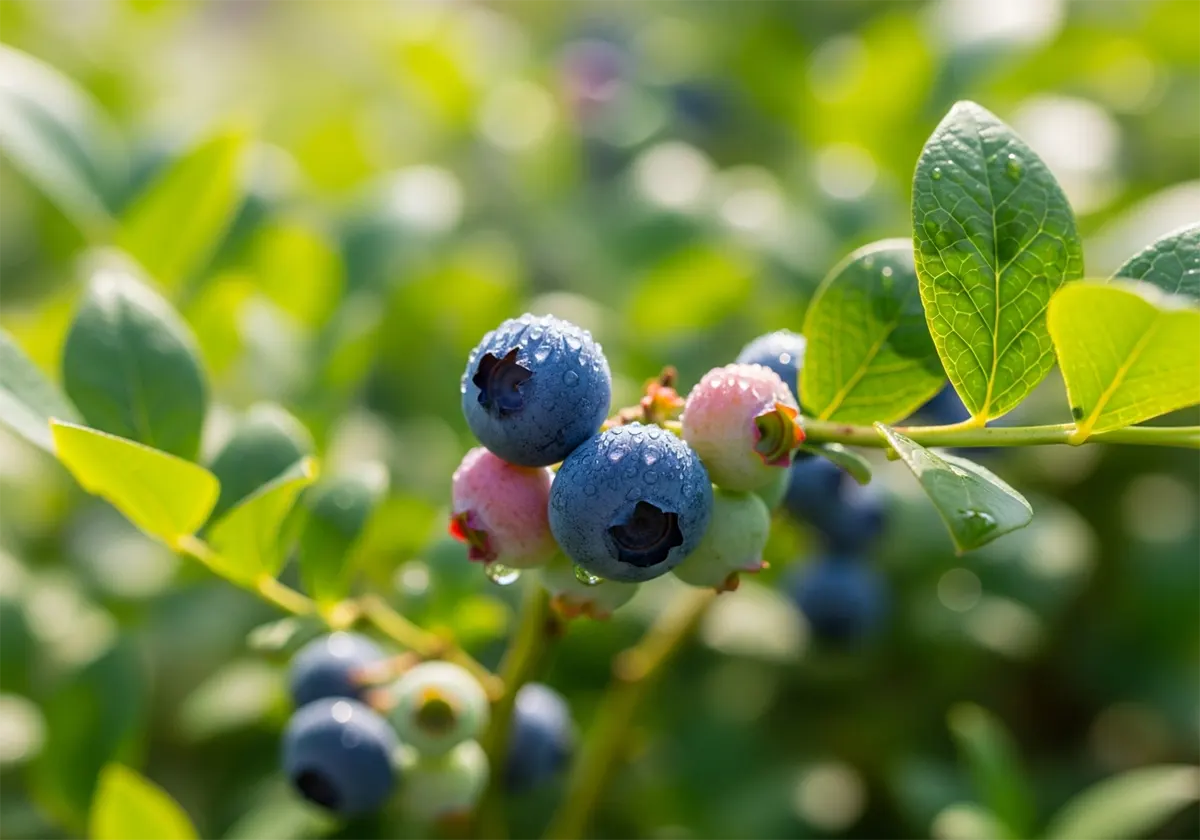table of contents
When we talk about plant nutrients, we always think about nitrogen, phosphorus, potassium, and the NPK ratio. However, this NPK nutrition is a basic plant need. There are still many secondary nutrients that are very important for plants, such as calcium. It is a secondary nutrient for plants and crops; it helps plants to form strong cell walls and improves their resistibility. Frankly speaking, calcium for plants is not only the meaning of secondary nutrients, but it is also an important soil conditioner.
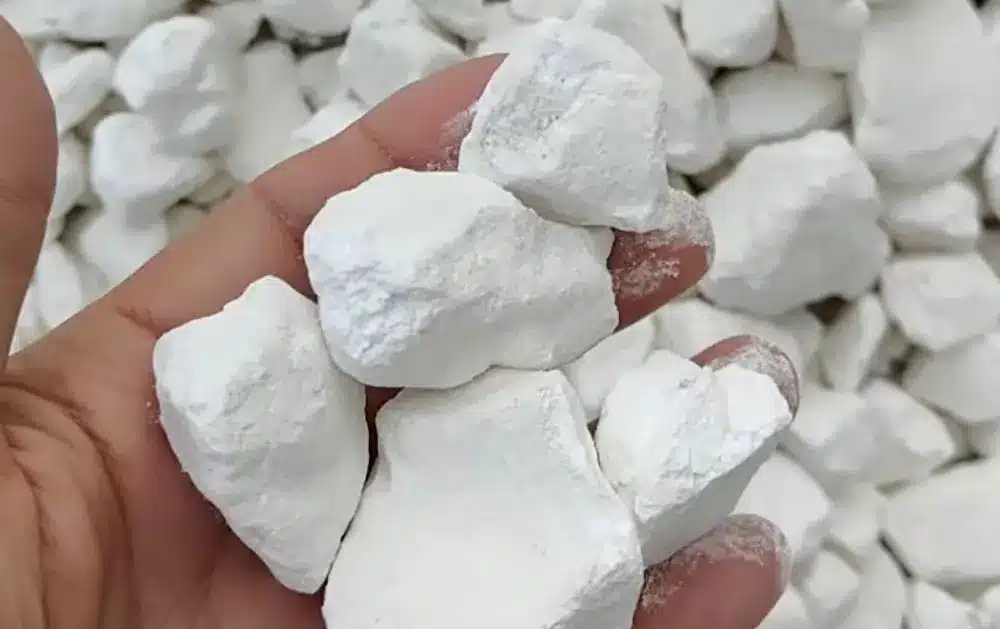
Why Is Calcium So Important for Plants?
Many growers may have heard about the name “structural nutrient”, because the calcium can help to improve the plant cell walls and strengthen plant tissues from the inside out. If our plants lack calcium, these plant cell walls will become weak and very easy to get sick or hurt.
Except for the function of structural support, calcium is also very important for root development, transporting nutrients, and turning on certain enzymes. From the root to the leaves, calcium plays an important part in every aspect of plants.
However, how much calcium a plant can absorb depends on the soil conditions. Even if we fertilize with a lot of calcium, it is not easy for plants to absorb it when the soil pH level is acidic or the soil is compacted. That’s why we should know the importance of calcium in plants and calcium in soil, which can help us better take care of our plants for long-term success.
Signs Of Calcium Deficiency in Plants
When growing plants, we often encounter various issues, and calcium deficiency is one of them. So, we’d better test the soil before we grow a plant to make sure it’s in good condition. However, if we face the calcium deficiency, plants will give us some signs first, so many experienced growers can determine the plant condition by some signs. We can often find calcium deficiency showing up in new growth because calcium is not easily transferred from older tissues to younger ones.
So when the plant’s calcium levels begin to drop, we can often find the signs. Here are some of the common signs:
- Stunted Root Growth: Our plant roots will be short and underdeveloped when lacking calcium.
- Necrotic Spots: We will find dead, brownish spots on young leaves or fruit when plants need calcium.
- Distorted Young Leaves: If lacking calcium, we will find new leaves curled, crinkled, or stunted.
- Classic Fruit Disorders: If plants lack calcium, the most famous signs are blossom end rot in tomatoes, peppers, and squash. And bitter pits in apples.
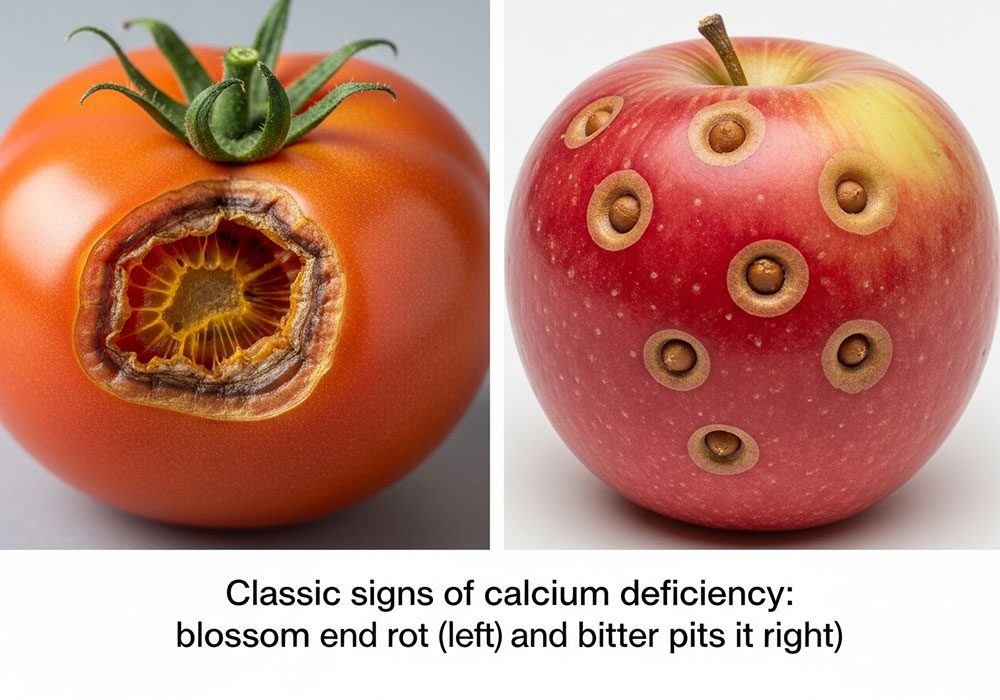
But we should pay attention to the fact that not all the signs of plant calcium deficiency mean a lack of calcium in the soil. Sometimes soil condition will affect the plant’s calcium absorption. Such as low pH levels, excessive salts, or soil compaction.
So we suggest that we can do the soil test before applying calcium. Plant deficiency might not be due to lack of calcium; sometimes it’s due to the reason that prevents roots from absorbing.
The Function of Calcium In Soil
About the function of calcium, we have shown that it can feed plants and can improve the soil. Calcium helps soil particles stick together, making it easier for air, water, and roots to move through it. This helps plants breathe and get nutrients more easily.
And calcium also can help to keep the soil chemistry in balance by lowering acidity and protecting roots from harmful metals like aluminum. That’s why calcium is so important, because it is both a nutrient and a soil amendment. Healthy soil that has the right amount of calcium can support healthy microbial life and long-term fertility.
However, having calcium in soil doesn’t mean your plant can absorb it easily. Plant calcium absorption depends on the flow of water; calcium cannot get to the roots if the soil is too dry. That is why a plant still lacks calcium even if the soil has enough, because the plants are watered irregularly.
Here are two key factors that determine calcium absorption:
- Soil pH: The soil pH level can affect how easily nutrients are absorbed. When the soil pH is low (acidic), calcium will be tied up, and this makes it hard for plants to absorb it.
- Cation Exchange Capacity (CEC): It tells you how well your soil can hold and release nutrients like calcium. Soils that are rich in organic matter and clay have a higher CEC, which means they can hold more calcium.
How to Choose Calcium Fertilizers & Soil Amendments
About the plant lacking calcium, we need to choose some calcium fertilizers. However, we’d better not choose the fertilizer blindly; we should consider your soil type, crop needs, and growing conditions. Here are the calcium fertilizer types and applications.
| Type | Source | Form | Key Benefit | Best Used For |
|---|---|---|---|---|
| Lime (CaCO₃) | Ground limestone | Solid | Raises pH and adds Ca | Acidic soils |
| Gypsum (CaSO₄) | Natural mineral | Granular | Adds Ca without altering pH | Neutral or alkaline soils |
| Calcium Nitrate | Synthetic | Soluble | Fast calcium + nitrogen boost | Hydroponics or foliar spray |
| Bone Meal & Shell Meal | Organic | Slow release | Adds natural Ca and P | Organic gardens |
| Seabird Guano & Fish Bone Meal | Organic | Balanced | Provides calcium + trace minerals | Long-term soil health |
If you’re running an organic farm or home garden, you may need the organic fertilizer with natural resources such as bone meal, shell meal, and seabird guano. All these fertilizers can help make calcium more available and feed soil microbes.
The Best Ways to Add Calcium to Your Soil
If you have tested your soil and it shows that you need to add calcium, you have a lot of good choices. What kind of calcium you should choose depends on the pH level of your soil at this moment and how quickly you need results.
For Quick Results
- Liquid Calcium Fertilizers: Calcium nitrate and other products work quickly and can be sprayed on leaves or soaked into the soil. They give you an instant boost to fix a lack of calcium.
- Calcium Sulfate: It’s also known as gypsum and is a great amendment. It can be added to improve the soil calcium without changing the soil pH. It is very suitable for you if your soil pH is already balanced but you don’t have enough calcium.
For Long-term soil building & pH Adjustment
- Calcium Carbonate: Known as lime, if your soil is acidic and has little calcium, lime is the best thing to use. It can slowly raise the pH level and add calcium to the soil in several months.
- Bone Meal: It is an organic way to get calcium and phosphorus. It can break down slowly, offering the plant a steady supply of calcium throughout the growing season.
- Eggshells: They are a common home method for calcium supply; they need a very long time to break down. And we need to crush them into a fine powder before adding them into the soil or compost.
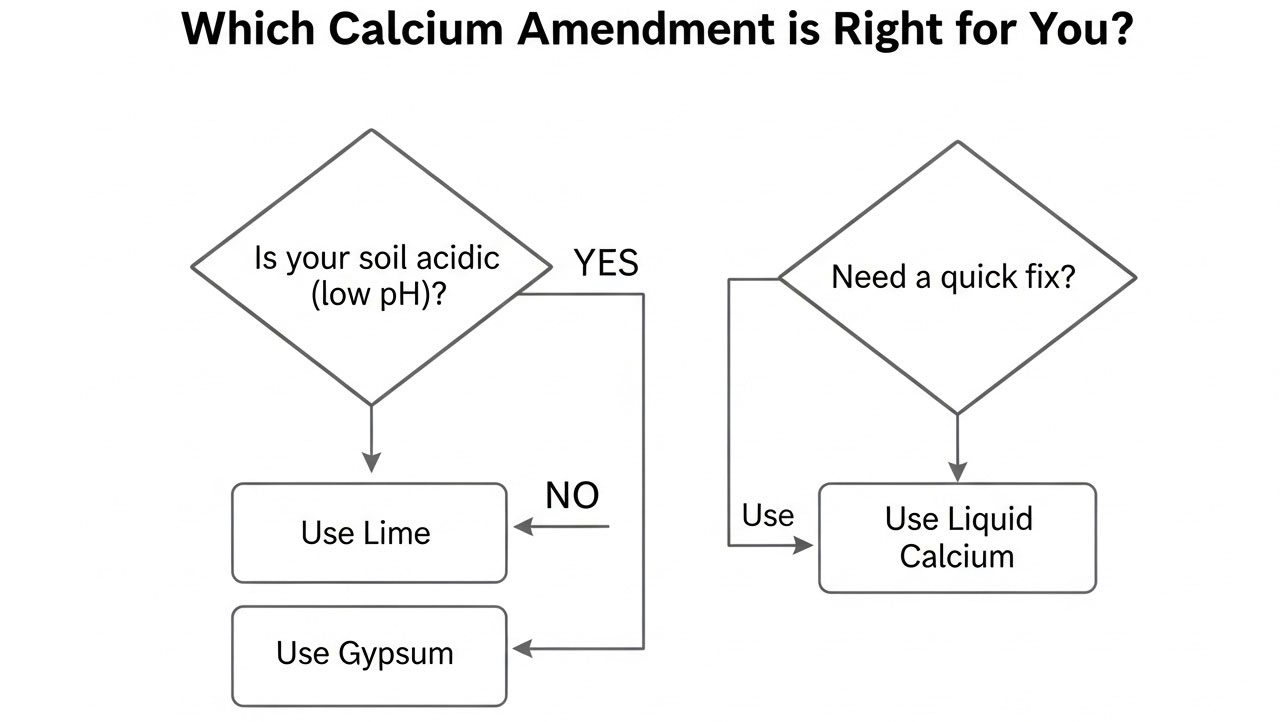
How to Apply Calcium Correctly?
Although we know the calcium can help our plants to get rid of calcium deficiency and help to improve our soil condition. But how to use it in the correct way is still very important. So we’d like to introduce some steps:
- Test First: Please always remember to do the soil test first when you want to adjust your soil condition, knowing your soil calcium level and pH level.
- Regular Watering: Calcium cannot be easily absorbed by plants when the soil is too dry, so please keep the soil wet and water regularly.
- Follow Instructions: No matter what kind of fertilizers you use, you’d better apply the correct amount of calcium based on your soil test recommendations. Avoid the plant’s nutrient imbalances and burn the roots.
Conclusion
Now, we can know that calcium is more than just a secondary nutrient; it can help plants build strength and keep our soil in balance. We can build our own healthy and natural garden or farm by learning what calcium is and how it works and using the right calcium fertilizers or soil amendments.
Healthy soil rich in calcium can support strong roots, balanced pH, and a thriving microbial ecosystem. So please remember that, to grow plants, start with good soil. Strong plants come from strong soil. If you feed your soil, your soil will feed your plants.
FAQs About Calcium
Q: How often should I test my soil for calcium?
A: For most home gardeners, testing every 2-3 years is sufficient. If you are actively correcting a problem, you may test annually.
Q: Can plants recover from calcium deficiency?
A: Yes, if the deficiency is caught early. Damaged leaves and fruit will not recover, but new growth will appear healthy once the plant has access to sufficient calcium.
Q: What is the best source of calcium for plants?
A: There’s no single “best” source. Gypsum is excellent for adding calcium without affecting pH, while lime is ideal for correcting acidic soil. Liquid calcium fertilizers are best for a quick rescue.
Related Posts:

